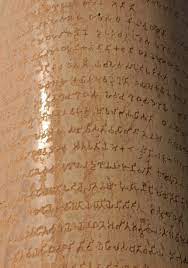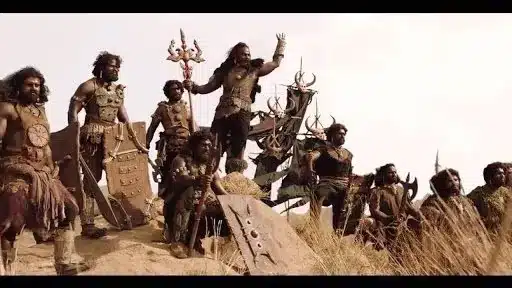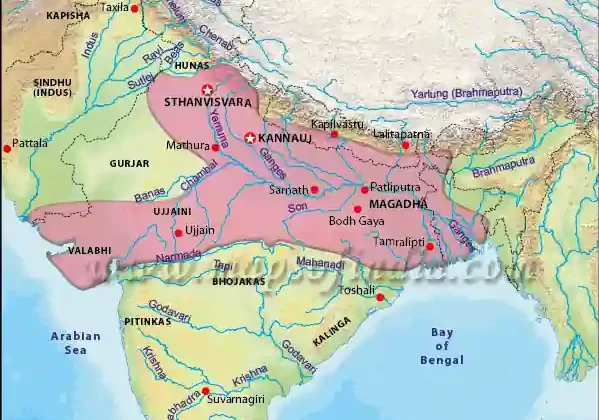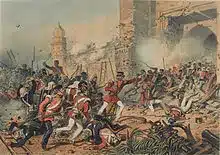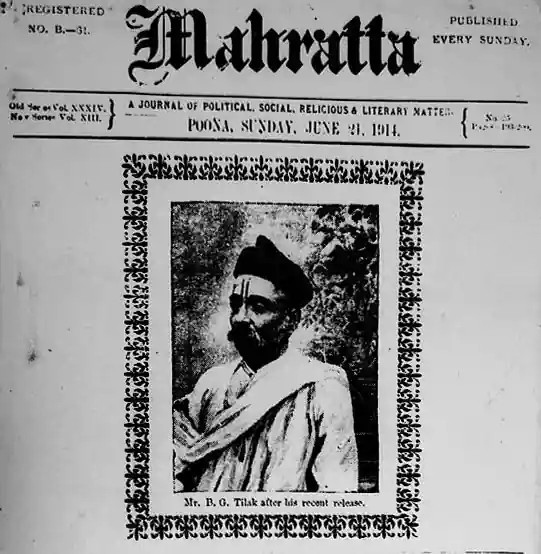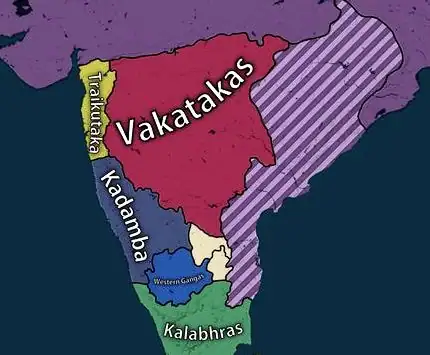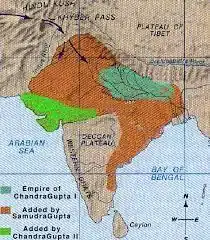The Indo-Greek kings
Indo-Greeks (Bacterian Greeks) were the first foreign rulers of North-Western India in the Post-Maurya period. Indo-Greek rulers have been mentioned as ‘’Yavanas’’ in Indian literature.
After the death of Alexander in 323 BCE, many Greeks came to settle on the north-western borders of India with Bactria (presently the northern part of Afghanistan). Around the 3rd century BCE, Diodotus I (the governor of Bactria) revolted against Antiochus, the Seleucid king, and established an independent Bactrian Greek kingdom.
These Bactrian Greeks who ruled over parts of north-west India between the 2nd century BCE and the early 1st century BCE are known as the Indo-Greeks.
Why were Indo-Greeks invade India?
- With the construction of the Great Wall of China in 220 BC, the Central Asian tribes were pushed back from the China and they turned their attention towards the neighbouring Greeks and Parthians.
- Also, the successors of the Mauryas – the Sungas and the Kanvas were in no position to offer stiff resistance to the foreign invaders.
- Thus, in order to escape the wrath of the nomadic Scythian tribes (Central Asian tribes), the Bactrian Greeks were forced to invade India.
Important Indo-Greek Rulers
Indo-Greeks ruled from three areas in India – one branch from Bactria (north Afghanistan), the second from Taxila and the third branch from Sakala (Sialkot). Of the Indo – Greeks ruling from Taxila, the most important ruler was Antialcidas who sent his ambassador Heliodorus to the court of the Sunga ruler Kasiputra Bhagabhadra (Bhagavata) at Vidisha. Heliodorus constructed a pillar at Vidisha in honour of god of gods Vasudeva (Krishna). This pillar is also known as Garudadhwaja or Besnagar Pillar Inscription. The third branch of the Indo – Greeks ruling from Sakala (Sialkot) belonged to the house of Euthedemus.
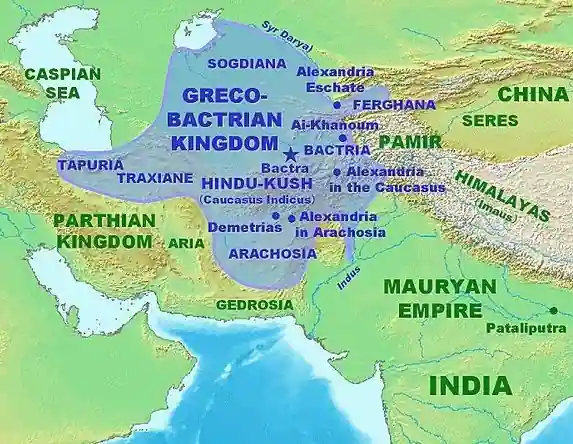
Demetrius (King of Bactria)
- Invaded India at the beginning of the reign of Pushyamitra Shunga and even reached Patliputra.
- He was created with real Indo-Greek expansion in India and has been referred to in Greek Sources as the “King of Indians”.
- His coins bear legends in Greek and Prakrit written in Greek and Kharoshthi script.
- The coins were issued in silver and one of the coins was known as “Heracles”.
- His capital was Sakala (Sialkot Pakistan) which he named Euthydemia in memory of his father.
- His coins have been found in several parts of modern Pakistan, Afghanistan and Central Asia.
- From Taxila, Demetrius sent two of his commanders, Apollodotus and Menander for further conquests. Apollodotus conquered the Sindh and marched up to Ujjain. Menander extended his rule up to Mathura and from there he made attempts to capture Pataliputra. But he was stopped by the army of Vasumitra, the grandson of Pushyamitra.
Apollodotus I
- Apollodotus I was the Indo-Greek ruler who ruled around 174-165 BC in the western and southern parts of the Indo-Greek Kingdoms covering the area from Taxila in Punjab to Sindh.
- Apollodotus I was the first king who ruled in India only and this is said to be real founder of the Indo-Greek kingdom of India and known as first “Real Indo Greek”.
- He was one of the generals of the Demetrius I of Bactria.
- We come to know about apollodotus I through the bilingual Indian standard square coins by him.
- The animals such as elephant and bull are depicted in his coins.
Menander /Milinda/Minedra (165 BCE – 145 BCE)
- The most celebrated Indo-Greek ruler who not only stabilised Indo-Greek power, but also extended his empire’s frontiers in India.
- His empire extended over parts of both Bactria and northwestern India and appears to have included southern Afghanisthan and Gandhara, the region west of the River Indus.
- Had his capital at Sakala (modern Sialkot, Punjab), and it is believed that he also invaded and conquered the Ganga- Yamuna doab but failed to retain it for long.
- He was converted to Buddhism by Nagasena and has been identified with the King Milinda mentioned in the famous Buddhist text Milindapanho (Question of Milinda) written in 130 BC in Pali, which contains philosophical questions that Milinda asked Nagasena (the Buddhist author of the text). The text claims that impressed by the answers, the king accepted Buddhism as his religion.
- He was a follower of Mahayana Buddhism.
- He was defeated by the Parthians around the last quarter of the 2nd century BCE, which led to the end of Greek rule in Bactria and the area to the south of the Hindu Kush.
- The last Indo-Greek king was Hesatrius.
Heliodorus pillar
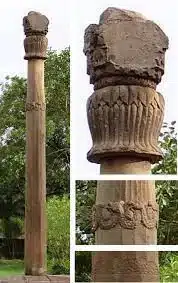
- The Heliodorus pillar is a stone column that was erected around 113 BCE in central India in Besnagar (near Vidisha, Madhya Pradesh).
- The pillar was called the Garuda-standard by Heliodorus, referring to the deity Garuda.
- The pillar is commonly named after Heliodorus, who was an ambassador of the Indo-Greek king Antialcidas from Taxila, and was sent to the Indian ruler Bhagabhadra.
- A dedication written in Brahmi script was inscribed on the pillar, venerating Vāsudeva, the Deva deva the “God of Gods” and the Supreme Deity.
- The pillar also glorifies the Indian ruler as “Bhagabhadra the savior”.
- The pillar is a stambha which symbolizes joining earth, space and heaven, and is thought to connote the “cosmic axis” and express the cosmic totality of the Deity.
- The pillar was discovered by Alexander Cunningham in 1877.
- The pillar is also one of the earliest surviving records of a foreign convert into Vaishnavism.
Impact of Indo-Greek Rule
- The Indo-Greeks were the first rulers in India to issue gold coins in India (which increased in number under the Kushanas).
- Interestingly, the coins of the Shakas, Parthians and the Kshatrapas followed the basic features of Indo-Greek coinage, including the bilingual and bi-script legends in Greek and Kharoshti.
- Indo-Greeks promoted the Gandhara school of art in the north-west.
- The Indo-Greeks were good traders and were referred to as Yavana-gandhikas (foreign perfume dealers).
- Indo-Greeks contributed to engineering through construction of canals and dams. They also contributed to the growth of medicine and astronomy.
- It is rather interesting to note that out of the 42 Indo-Greek kings, as many as 34 are known only through their coins. The large number of kings within a short span of time suggests that some of them ruled concurrently, and thus it is probable that two Greek dynasties ruled north-western India on parallel lines simultaneously.
| Mauryan Empire | Sites Of Indus Valley Civilization |
| Vedic Period | Vedic Literature |
| Marriages In the Later Vedic Period | MCQs: History Of Ancient India |

